 There is so much Power BI (related) news here at the Microsoft Ignite 2019 conference, I thought you could benefit from a single overview of all the announcements. I’ve lined them all up nicely for you, with links to detailed blog posts or documentation if available.
There is so much Power BI (related) news here at the Microsoft Ignite 2019 conference, I thought you could benefit from a single overview of all the announcements. I’ve lined them all up nicely for you, with links to detailed blog posts or documentation if available.
Let me know if I missed an announcement, and I’d be happy to add it to this blog post!
1. Enterprise Information Management Capabilities in Power BI
“Organizations recognize the value of empowering their employees to embrace data-driven insights. Power BI helps customers drive data democratization in their organization because it enables anyone to draw insights from data with easy-to-use data visualizations and analytics to guide business decisions. As customers empower every employee with Power BI, it is critical for them to ensure that they better protect their data no matter where it is accessed. Today we’re announcing brand new capabilities in Power BI data protection. These enhancements take advantage of Microsoft world-class security capabilities, enabling organizations to:
- Classify and label sensitive Power BI data using the same familiar Microsoft Information Protection sensitivity labels used in Office.
- Enforce governance policies even when Power BI content is exported to Excel, PowerPoint, or PDF, to help ensure data is protected even when it leaves Power BI.
- Monitor and protect user activity on sensitive data in real time with alerts, session monitoring, and risk remediation using Microsoft Cloud App Security.
- Empower security administrators who use data protection reports and security investigation capabilities with Microsoft Cloud App Security to enhance organizational oversight.
Now in preview, these capabilities engage when Power BI is paired with Microsoft Information Protection and Microsoft Cloud App Security.”

Announcement: https://powerbi.microsoft.com/en-us/blog/weaving-business-intelligence-into-the-fabric-of-the-organization-with-microsoft-power-bi.
2. Power BI Lineage View updates
“Nowadays, enterprise analytical apps are more advanced than ever before; leveraging multiple data sources and BI artifacts, reusable components, and cross workspace dependencies. Understanding the flow of data in these projects, from source to destination, is a challenge. Sometimes questions like “What happens if I change this data?, “Where is the data in my dashboard coming from”, or “Why isn’t this report up to date?” can be nearly impossible and very time consuming to understand.
To address these challenges, new data lineage capabilities are natively available within Power BI. Our new lineage view visualizes the entire data journey within a given workspace, making it easy to determine upstream and downstream dependencies of artifacts, examine artifact information, and take action. Even more-so, for reusable assets such as shared datasets or linked dataflows, users can easily track their lineage cross workspace and navigate accordingly.”

Announcement: https://powerbi.microsoft.com/en-us/blog/introducing-power-bi-lineage-view/
Docs: https://docs.microsoft.com/en-us/power-bi/service-data-lineage
3. Better Teams and Power BI integration
“Less communication using data enables everyone to make fast and accurate decisions. Today, we’re excited to announce deeper integrations with Microsoft Teams are coming soon. They’ll help your organization harness data effectively as individuals work together to achieve shared goals.
- Starting in late 2019, we will ship a new tab for Microsoft Teams that supports the new workspace experience and reports in organizational apps. This gives all your team members access to data without leaving Microsoft Teams
- In 2020 we’ll go further by releasing rich previews of Power BI reports directly within Teams channels and chats. We’ll include an action button so everyone can quickly act on the data.

4. Power BI integration with Azure Synapse Analytics
Microsoft announced Azure Synapse Analytics, the next generation of Azure SQL Data Warehouse. With Azure Synapse, big data and SQL data professionals can collaborate, manage, and analyze your most important data with ease—all within the same service.

“We’re excited to announce that Power BI is natively integrated into Azure Synapse Analytics.
- Customers can link Power BI and Azure Synapse workspaces together providing them with a single pane of glass to develop and manage their end to end analytics infrastructure.
- BI professionals can create enterprise grade semantic models from the Synapse workspace through integration with Power BI Desktop – which helps customers define their KPIs and business logic, apply role based security, and provides a blazingly fast in-memory cache.
- Customers can build Power BI reports directly from within the Synapse workspace and make these reports available to their end users.”
Announcement: https://azure.microsoft.com/en-us/blog/simply-unmatched-truly-limitless-announcing-azure-synapse-analytics/
5. Large data model support (up to 400GB) in premium capacity
Announcement of the availability of the public preview of large in-memory semantic models. The large models feature brings Power BI dataset cache sizes to parity with Azure Analysis Services model sizes.
“As customers work with massive data volumes they will be able to create data models that go up to 400GB of compressed data, taking advantage of all the memory they have in their Power BI Premium capacity. This increase in model sizes unleashes endless possibilities for enterprise models and in conjunction with certified and promoted datasets, enables organizations to have one, enterprise-grade version of the truth.”

Please see https://aka.ms/LargeModels for further information such as availability by region, and how to set up your Power BI Premium capacity for large models.
6. Decomposition Tree in Power BI Desktop
The community voted and Microsoft acted – the decomposition tree idea has over 4,500 votes on ideas.powerbi.com, and they have now announced the preview of the decomposition tree visual! It will ship in the November Power BI Desktop release next week.
“This visual helps users understand the root cause that contributes to a high or low KPI value broken down by one or more dimensions. The AI component of the decomposition tree is the choice to automatically find the most interesting splits and conduct the root cause analysis for you, instead of splitting manually by dimensions.”

7. Automated Machine Learning in Power BI Generally Available
Automated Machine Learning (AutoML) in Power BI was made generally available!
“With Automated ML, business analysts can build machine learning models to solve business problems that once required data scientist skillsets. Power BI automates most of the data science workflow to create the ML models, all while providing you full visibility into the process.”

Announcement: https://powerbi.microsoft.com/en-us/blog/announcing-automated-machine-learning-in-power-bi-general-availability/
8. Cognitive Services in Power Bi Desktop (Preview)
“The integration with Azure Cognitive Services allows users to better engage with unstructured data by detecting language, scoring sentiment, extracting key phrases, and identifying objects in images. Cognitive Services is available today in Power BI Premium and can be accessed from Power BI dataflows. As of next week, these capabilities will accessible directly from Power BI Desktop.”

9. ALM pipelines
“Enterprises need proper ALM functionality to support the development, testing, and rollout of strategic BI applications. This feature gives enterprises the ability to maintain development, test, and production environments and incrementally transition artifacts between them, reconfiguring them with the appropriate connections and security settings.”
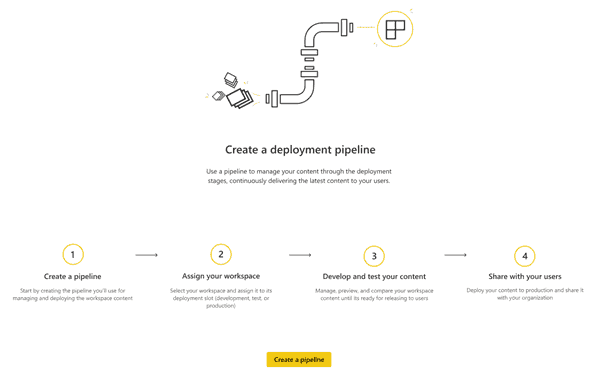
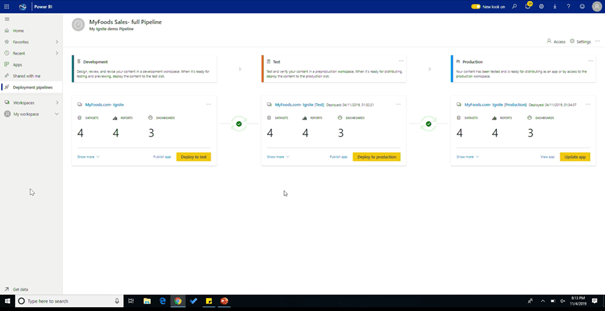
Recording of the session at Ignite: https://myignite.techcommunity.microsoft.com/sessions/83502
10. New Admin usage Metrics feature in the Admin Portal
Announcement of a revamped admin portal page that displays usages metrics. It will show information regarding usages for core artifacts, information protection coverage, custom visual usage, data exports to excel, amongst other info.
11. 50+ Dataflows updates
“Over the past few weeks, we have released several new features in Dataflows, allowing users to seamlessly ingest and prepare data that can be widely reused by other users across the Power Platform.”

Announcement: https://powerbi.microsoft.com/en-us/blog/50-new-features-in-dataflows-this-month/
12. Power BI Paginated Reports in Power BI Embedded
“You can embed paginated reports for your external customers in an application and portals using a set of new APIs.”

Announcement: https://powerbi.microsoft.com/en-us/blog/embed-paginated-reports-in-your-own-application-for-your-customers-preview/
13. SQL Server 2019 Analysis Services and Reporting Services
“With the general availability announcement of SQL Server 2019, SQL Server 2019 Analysis Services and Reporting Services are now generally available. This release is packed full of new features for both products, including calculation groups in SSAS for calculation reusability, governance settings to protect server resources, and enhanced accessibility options for SSRS. The full list of features in the SQL Server 2019 release, including those for both SSRS and SSAS, are available in the What’s New in SQL Server 2019 documentation online.”
14. Power BI Q&A – visual
“The Power BI Q&A visual feature allows analysts to add search to their Power BI desktop reports to allow them to easily discover and perform ad hoc analysis.”
15. Power BI roadmap for October 2019 through March 2020
The product team has made their new roadmap available, for the period October 2019 through March 2020. Besides the topics I’ve already mentioned above, the roadmap is packed with cool and useful improvements. Go check it out here: https://docs.microsoft.com/en-us/power-platform-release-plan/2019wave2/business-intelligence/planned-features
I’ve taken the liberty of selecting a few (personal) highlights. Let me know if I missed a highlight!
15.1 XMLA read/write
“This is a follow-up to our March preview of XMLA read-only support, which allowed third-party BI tools to connect to datasets in Power BI Premium and added some performance monitoring solutions. We will now be allowing full read/write access to datasets. This opens a huge set of opportunities for additional third-party tool connectivity to enable scenarios like monitoring, lifecycle management, and debugging.”
15.2 Export AutoML models from Power BI to Jupyter Notebook or Azure Notebooks
“Automated machine learning (AutoML) in Power BI enables analysts to build ML models for common business scenarios, such as binary prediction, classification, regression, and time-series forecasting. It automates feature extraction from inputs, algorithm, and hyper-parameter selection for tuning of ML models and validation.
For further customization and specialized tuning of these models, you can now export the automatically created models to Jupyter Notebook or Azure Notebooks with just a couple of clicks. The exported models can then be customized and deployed outside Power BI with services such as Azure Machine Learning.”
15.3 Theme Editor
“Users expect to be able to easily change common formatting settings with just a few clicks. To better align with Office and user expectations, we will provide a way to update the most commonly changed settings in one place without needing to write a JSON theme file. These settings will include page background and wallpaper, the visual’s color palette, font family and size, and more.”

16. Azure Maps powered visual for Power BI
There was an announcement for a new map visual in Power BI, fueled by the Azure Maps service.
17. Upgrade workspace from v1 to v2
Adam Saxton showed us what the workspace upgrade experience will look like! It will be something that can be done by the workspace admin, API is coming later, URLs will be kept intact, and it will be possible to switch back to v1.
(thanks Just Blindbaek, for the Tweet about it!).

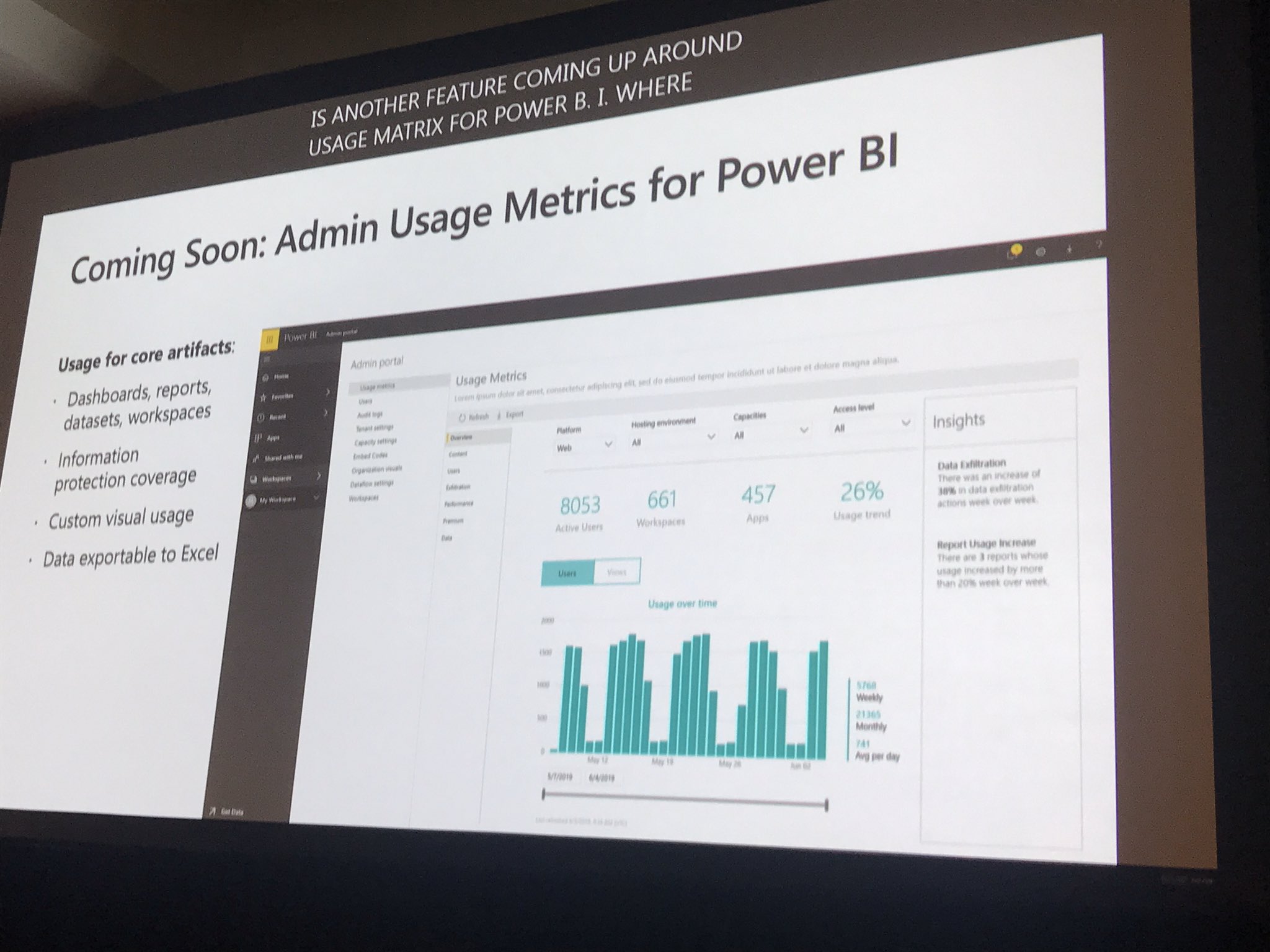


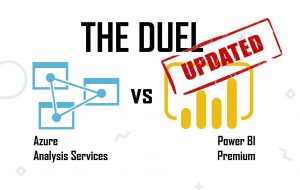
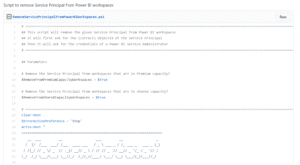
Don’t forget the new maps visual powered by Azure maps.
Yes, that’s right! I’ll add it to the blog post later today.
Thanks for noticing that!
Lovely summary! Is there a link for “ Cognitive Services in Power Bi Desktop“? Will that be premium only or pro as well?
This will be requiring Premium. Quote: “Cognitive Services is available today in Power BI Premium and can be accessed from Power BI dataflows. As of next week, these capabilities will accessible directly from Power BI Desktop.”.
Check this link for more info, and the release notes of the November release, when they come out!
Nice recap! Did you happen to see the preview of the Power BI Deployment Pipeline? It looks AMAZING!!
Yes! Totally agree. A session about it at Ignite was recorded! https://myignite.techcommunity.microsoft.com/sessions/83502 (slide deck available)
I have a blog post lined up with a bunch of interesting session recordings.
Pingback: Killer Power BI updates at MS Ignite (Roundup | November 11, 2019) | Guy in a Cube